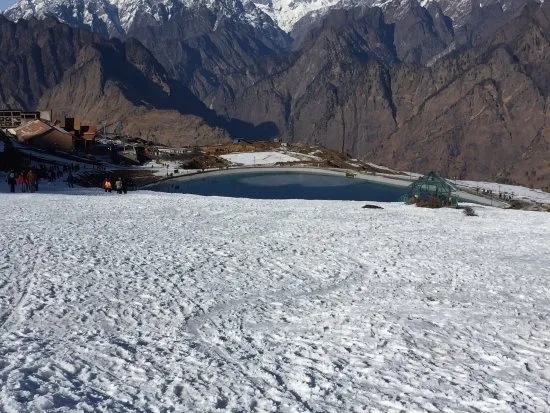Is There a Need for an Integrated Himalayan Action Plan with an Early Warning System?

Synopsis
Key Takeaways
- Integrated action plan for the Himalayas is crucial.
- Multi-hazard early warning systems are essential.
- Community participation can enhance resilience.
- Strict land-use regulations are necessary to mitigate risks.
- International examples can inform local strategies.
Dehradun, Oct 15 (NationPress) Advocating for a cohesive Himalayan action strategy that incorporates a multi-hazard early warning system and stringent land-use regulations, a recent report has emphasized that the Himalayas are currently facing a pivotal moment where climate change and unchecked human development are merging, resulting in unparalleled disaster risks.
The report titled 'Enhancing Multi-hazard Early Warning and Resilient Settlement in the Himalayan Region' was unveiled during a stakeholder consultation held in Dehradun, Uttarakhand.
It proposes an integrated action framework that encourages community involvement, arguing that the outdated, fragmented approach to disaster management should be replaced with a comprehensive multi-hazard warning system linked to enforceable land-use and livelihood strategies.
The findings point out that while climatic issues such as rapid glacial retreat, cloudbursts, and extreme rainfall escalate hazards like glacial lake outburst floods (GLOFs) and landslides, human interventions—especially unregulated construction and settlement expansion in high-risk areas—are significantly increasing the vulnerability and exposure of the population.
This creates a vicious cycle of risk that could worsen humanitarian and economic losses in states such as Uttarakhand.
Drawing examples from international practices in Japan, Switzerland, and Norway, the report urges accountability and commitment to bring preventable disaster-related fatalities in the Himalayas down to zero by 2030.
It calls for the immediate short-term deployment of affordable, real-time sensors (to monitor rainfall, soil moisture, and lake levels) along with a robust mobile alert system, which must be effectively integrated with long-term structural reforms including hazard-sensitive land-use planning and planned relocations.
In particular, the report emphasizes the need to create a resilient and adaptive early warning system capable of addressing a variety of hazards such as landslides, flash floods, cloudbursts, and glacial lake outburst floods, incorporating real-time climatic, hydrological, and geospatial data along with community-level response strategies. It also aims to evaluate and recommend measures for regulating settlements, optimizing land use, and implementing planned relocations in high-risk zones, thus reducing hazard exposure while fostering climate-resilient urban and rural development.
Furthermore, the report advocates for the establishment of a Himalayan Resilience Mission to coordinate a phased, ten-year plan, starting with the deployment of dense sensor networks and pilot relocations in communities at the highest risk.









